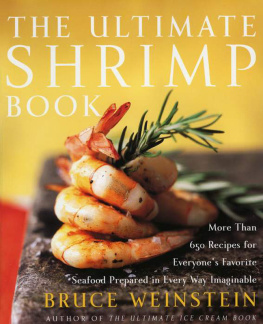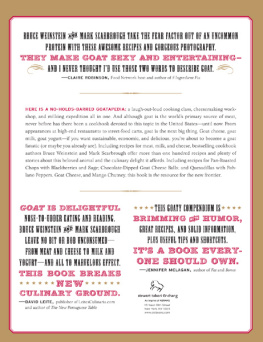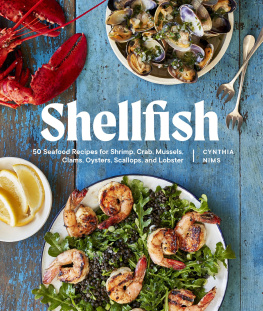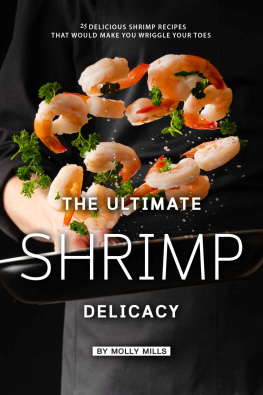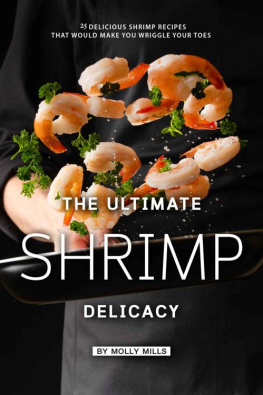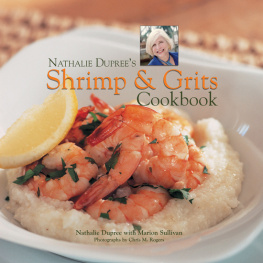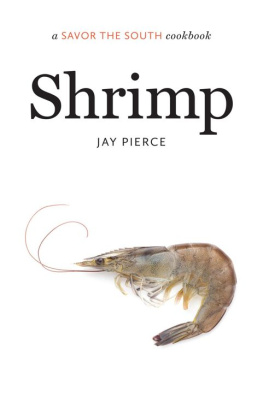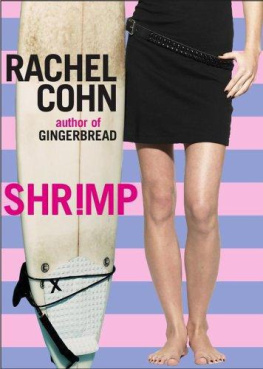F ried, steamed, or barbecued? In the end, it doesnt matter, because everyones crazy about shrimp. Its the worlds most popular fresh seafood. (Only canned tuna surpasses these little crustaceans.) U.S. cooks and consumers ate 963,000,000 pounds in 2000. And to think shrimp was bait a century ago.
When you bite into a perfectly prepared shrimp, its meat sweet and moist, you may wonder why it deserved all the health-scare press it got in the 1990s. While admittedly high in cholesterol, shrimp actually contributes to better ratios between LDL (bad cholesterol) and HDL (good cholesterol). Shrimp also lowers triglycerides in the blood. And a quarter-pound serving has only 80 calories, with less than 1 gram of fat.
Over the last year, weve been on a quest for the new-and-different and the tried-and-true. We tasted a stew of shrimp and pastis at a country hotel in Provence. In Denver, far from either coast, we found an authentic Japanese country restaurant, serving the finest tempura this side of Kyoto. And one spring night, we wandered from one Queens diner to the next, searching for the consummate example of that East Coast staple, shrimp scampi.
Easily. Shrimp is fun food, party food: quick, simple, and satisfying.
In this book, there are standards you probably havent thought of in years, like Shrimp Thermidor and Shrimp la King. There are also plenty of modern favorites, like Popcorn Shrimp and Kung Pao Shrimp. And there are some surprising treats, like Black Pepper Caramel Shrimp, a Vietnamese delicacy. As in all the Ultimate books, these basic recipes are pushed to new heights with variations. Once you master a basic recipe and some of the variations, try making up your own variations. That way, shrimp, the ultimate fun food, will be as fun for you to make as it is to eat.
I n this chapter, well follow shrimp through their culinary life. Along the way, well address a few health concerns, tell you how to size shrimp, and offer tests for freshness.
FROM THE OCEAN TO THE MARKET
Ah, the Pleasures of the Sea!
Theyre fast growing few. The Sea of Japan, once teeming with shrimp, is now almost barren. The mangrove swamps of Malaysia, the habitat for some of the worlds best shrimp, are being eradicated to satisfy the worlds hunger. And industrial contaminants have pushed Atlantic shrimping as far north as Greenland.
All is not lost. In 1990, there were no shrimp farms in the United States. Today, they constitute a thirty-five-million-dollar industry. Theyre sprouting up even faster in Central and South America, a gold mine for fledgling economies.
That said, there are still a few pockets in the ocean where shrimp are caught wild, where the harvest is nondestructive. The best lie off the Baja Peninsula. The white shrimp found there are the yardstick against which most farmed shrimp are measured.
Fresh Shrimp Probably Arent
Almost every shrimp available in North America and Europe, whether wild-caught or farmed, was flash-frozen the moment it was harvested. Unless you live within fifteen minutes of the ocean, or are fortunate enough to live near a Chinese community where shrimp are sold live from saltwater tanks, never-frozen shrimp simply arent available.
Actually, thats the good news. Flash-freezing ensures a shrimps freshnessas do certain chemicals. The FDA permits two additives. Sodium tripolyphosphate preserves the moisture content of shelled shrimp. Like beef or chicken, shrimp meat dehydrates when its exposed to the air. Bathing it in sodium tripolyphosphate allows a thin, gelatinous, moisture-sealing coating to form around the meat. But if youre leery of such chemistry, or are on a low-sodium diet, buy shrimp in their shells and peel them yourself.
Sodium bisulfite, the second additive, eliminates black spot (or melanosis), a natural condition caused by a digestive enzyme that runs amuck in the meat once the shrimps killed. In the initial stage, the enzyme causes black dots; in more advanced cases, black rings. Black spot is not harmful, just unsavoryand a pretty sure indication that the shrimp has been mishandled during processing.
For most of us, sodium bisulfite, like sulfites in red wine, presents no problems. But if youre allergic to sulfites, youll most likely react to it. To get around it, buy organic or nonadditive shrimp (organic is the industry term; nonadditive the governmental one in the United States and Canada). To guarantee that your shrimp are chemical-free, ask to see the box they were packaged in. Your fishmonger should be happy to let you have a look.
One surefire way to avoid problems is to buy shrimp exactly the way your fishmonger doesfrozen, in 3- or 5-pound boxes. You may find these in the freezer cases of gourmet supermarkets, or you can ask your fishmonger to sell you one directly. Youll end up with perfect shrimp, sealed in a double layer of protective ice (called double glazing). If youre lucky enough to land one of these boxes, they should be thawed for 2 to 3 days in your refrigerator, on a lipped baking sheet to catch the runoff. Yes, with 5 pounds, you might have more than you want, but you can always use what you need for the recipe, then steam the rest (see page 180) and keep them in the freezer in a freezer-safe bag. Refreezing is the safest way to store shrimp once youve cooked them; never refreeze raw shrimp.
Off with Their Heads!
Although we North Americans may cry it, were the only ones who do. Around the globe, shrimp heads are a delicacy.
In Manhattans hopping Chinatown, during spring and fall, the dim sum parlors are buzzing every Sunday morning with shrimp and hot peppers, fresh from the fryer. Each shrimp, no more than three inches long, is deep-friedhead, feelers, legs, tail and all. Pure magic, all crunch.
If youre lucky enough to find shrimp with their heads on, buy 50% more than the recipe calls for (the head accounts for about that much weight). You can cook them whole, and your family can snap off the heads and suck out the juices, just as they do with crawfish in New Orleans. Or you can snap off the heads before cooking and save them in your freezer to make fish stock.
FROM THE MARKET TO YOUR REFRIGERATOR
Use Your Nose and Eyes
To tell if shrimp are at their peak, just smell them (ask your fishmonger to hold up a handful). They should have little odor, just a hint of the sea, clean and bright.
A shrimp should not smell like
Ammonia or rotten eggs: its undoubtedly old.
Chlorine: Washing shrimp in chlorine to kill bacteria is legal, but not acceptable.
Gasoline: the harvesting trawler was leaking fuel into its belly.
After youve smelled the shrimp, look at themand beware two ominous colors. Avoid a shrimp thats dark pink around its shell segments. Yes, some are pink by nature (see page 4)but thats a rosy translucence in the meat itself. If a shrimp looks warmly pink just at the shell segments, or if it is unevenly pink on one side but not the other, chances are its been defrosted under warm water, and is thus partially cooked. Or, worse yet, its been improperly preserved, the chemical decay actually cooking the meat.
A shrimp should also not appear dusty yellow, especially around its neck (that is, the fleshy part exposed outside the shell, just where the head was snapped off). Yellowing is an indication of excessive sodium bisulfite (see page 1). The meat will be rough, like sandpaper. Tell your fishmonger to quit playing mad scientist in the back.

